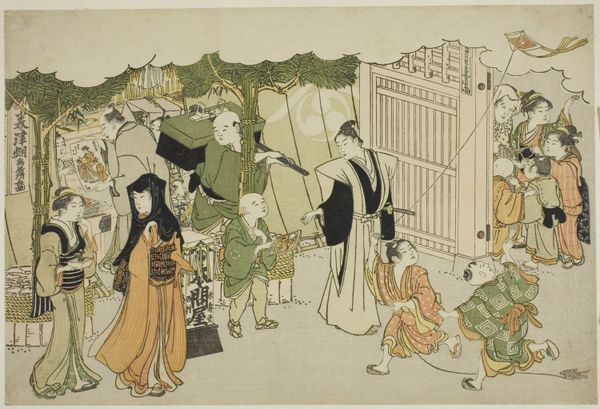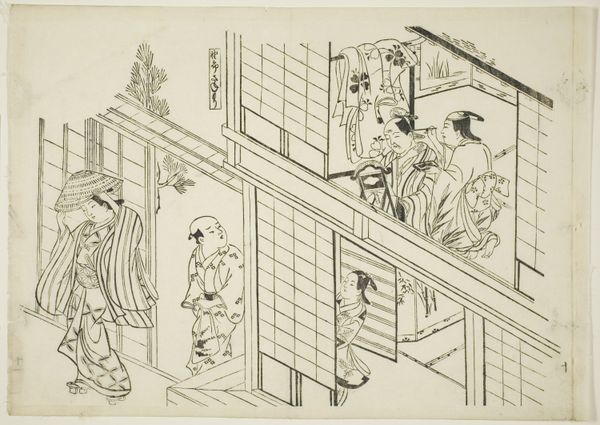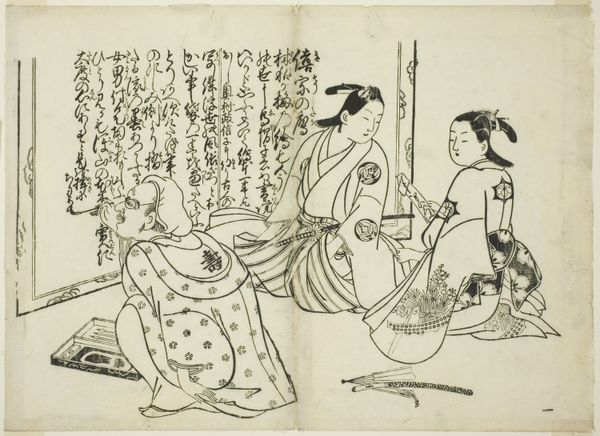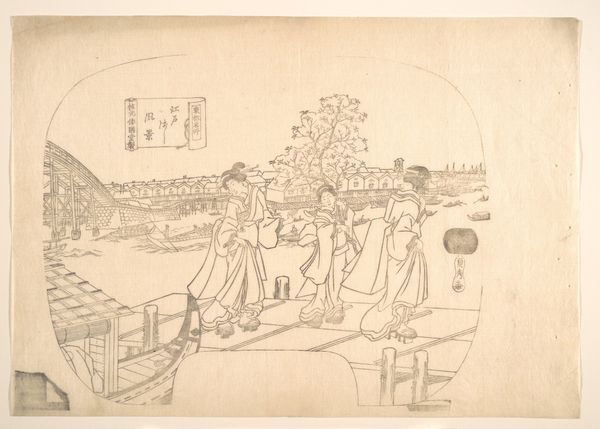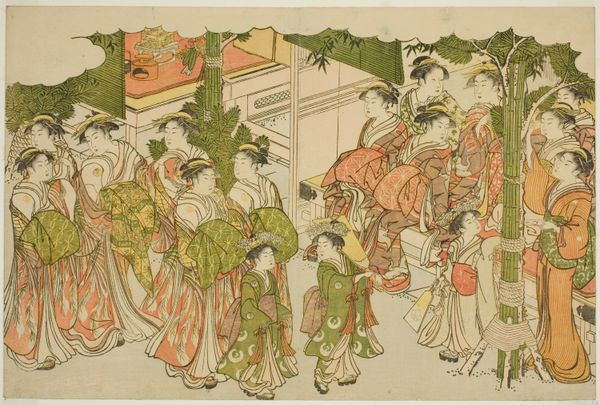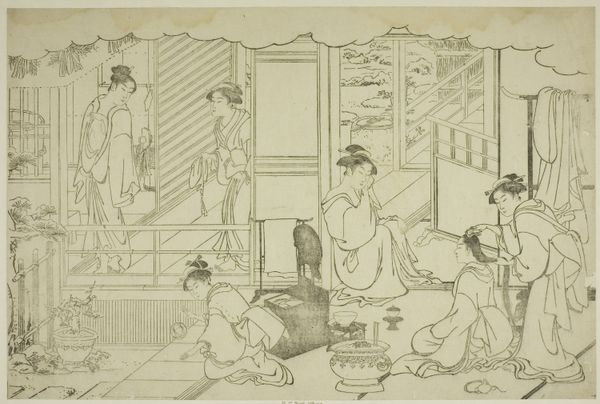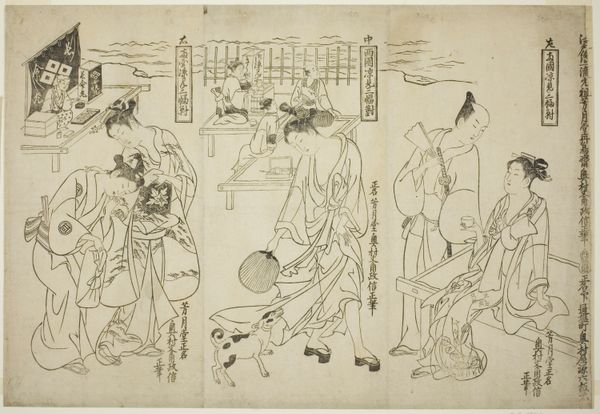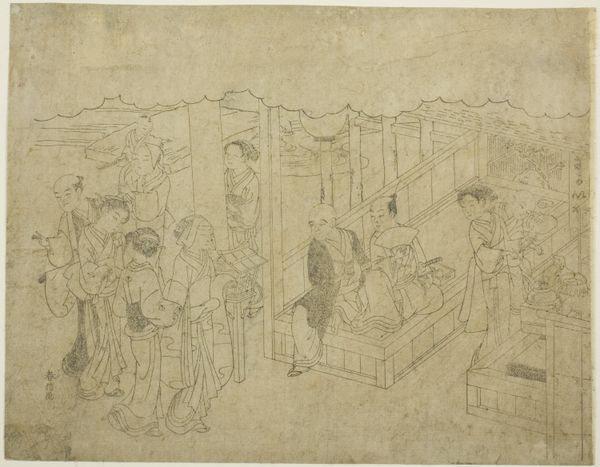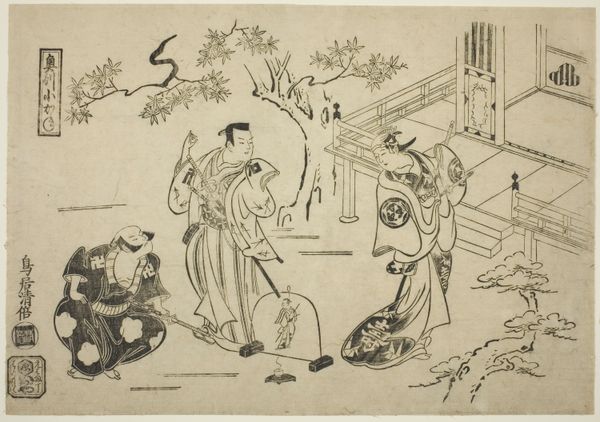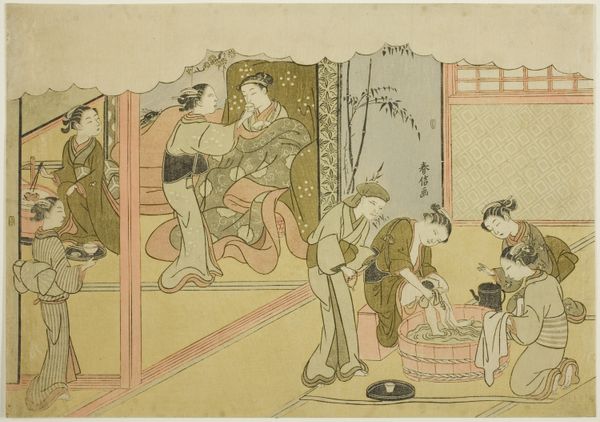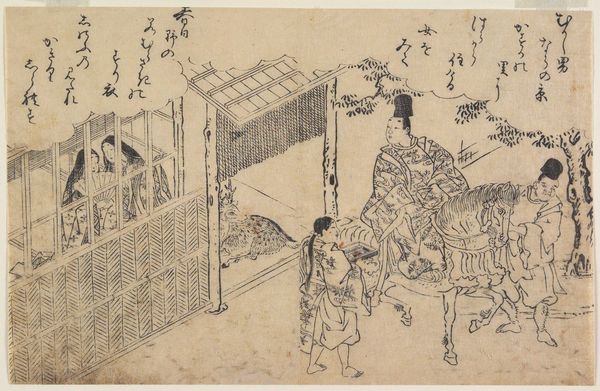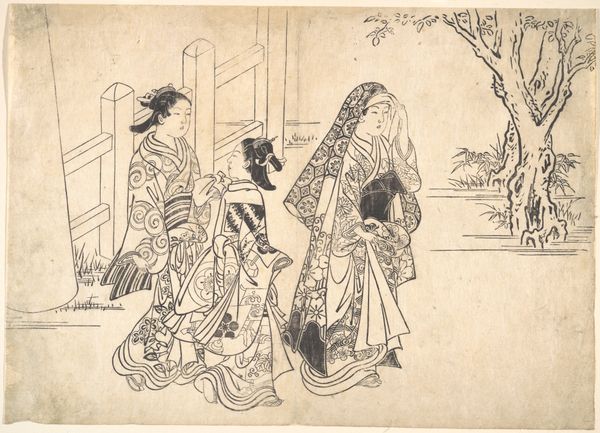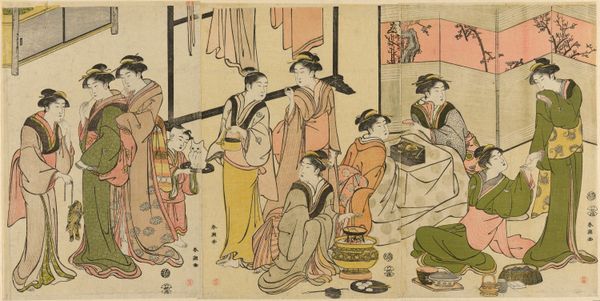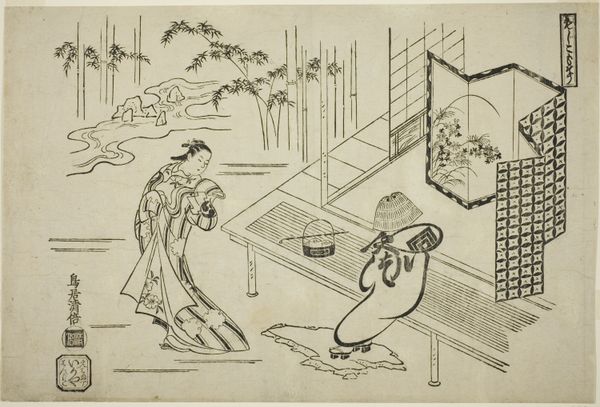
The First Day of Business (Akinai hajime), from the illustrated book "Colors of the Triple Dawn (Saishiki mitsu no asa)" c. 1787
0:00
0:00
print, paper, ink
#
ink drawing
# print
#
asian-art
#
ukiyo-e
#
paper
#
ink
#
genre-painting
Dimensions: 25.9 × 38.4 cm (10 3/16 × 15 1/8 in.)
Copyright: Public Domain
Curator: Let's discuss Torii Kiyonaga's print, "The First Day of Business" from around 1787, a work rendered in ink on paper. The scene presents a bustling Edo-period shop opening. Editor: My first thought? It’s so delicately drawn. All those fine lines! It feels surprisingly… festive, even with the monochrome palette. Curator: Ukiyo-e prints, especially those depicting daily life like this one, were popular among the merchant classes. Consider how such imagery democratized art consumption. Editor: I see what you mean, it presents a common slice of Edo life! The symbols! Children flying kites. The prominent placement of account books, which symbolizes fortune for the year! It feels deeply auspicious. Curator: Exactly! The work portrays a kind of optimistic commercial spirit typical for such genre scenes in prints and paintings alike. But don't overlook Kiyonaga's technical prowess. Notice how he captures the details in textiles or how his composition guides your eyes. Editor: The eye certainly flows nicely along the composition, starting with those figures on the left and the festive shopkeepers bustling along the top! Does the placement of the central figure represent stability amidst commerce, perhaps? Curator: Perhaps! It can certainly be seen that way, reflecting both the realities and aspirations of the period. What also strikes me, even in this rather humble artwork format, is how it visualizes class relations. We see the working class as subjects in the cultural lens. Editor: Absolutely! A powerful record. You can almost hear the sounds of the city coming alive on this important day. I will never look at an ink print in quite the same light again! Curator: Indeed. It’s a powerful reminder of how visual culture participates in the history and construction of such cultural and symbolic scenes.
Comments
No comments
Be the first to comment and join the conversation on the ultimate creative platform.
